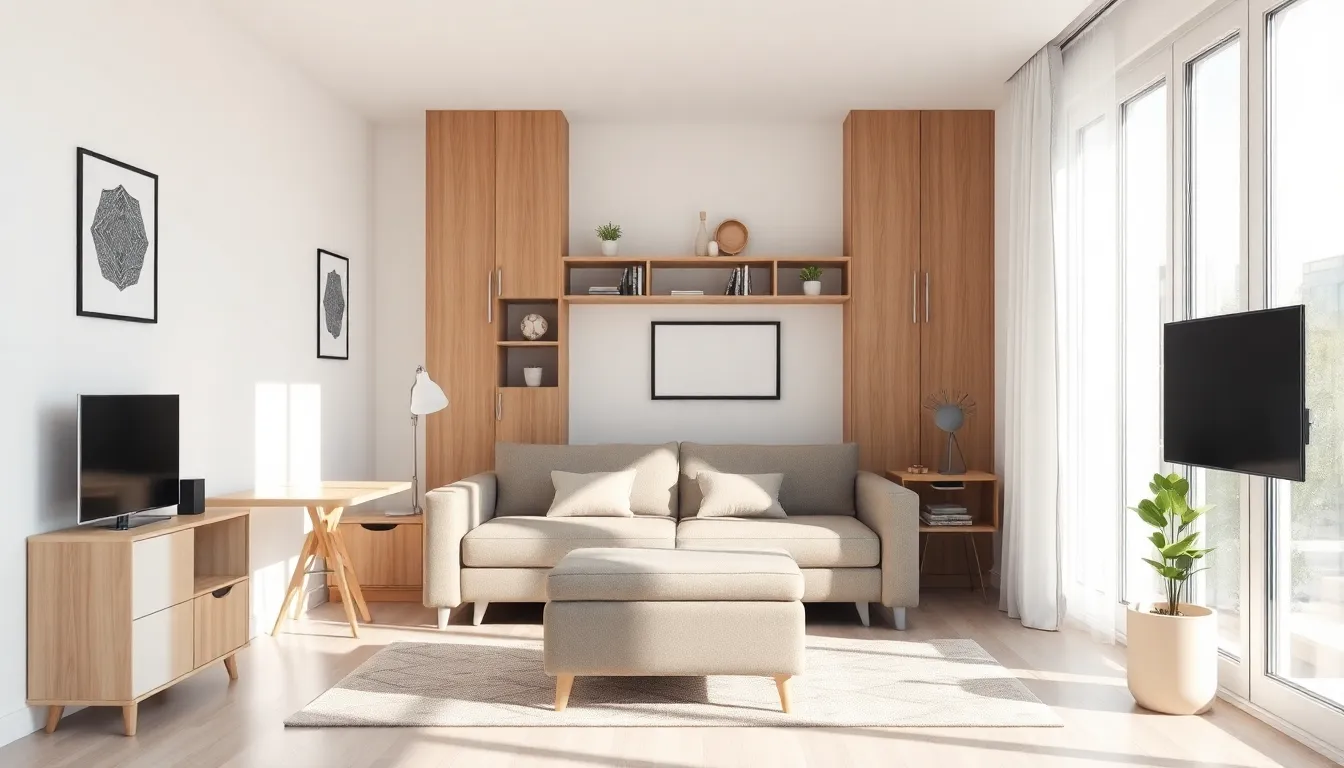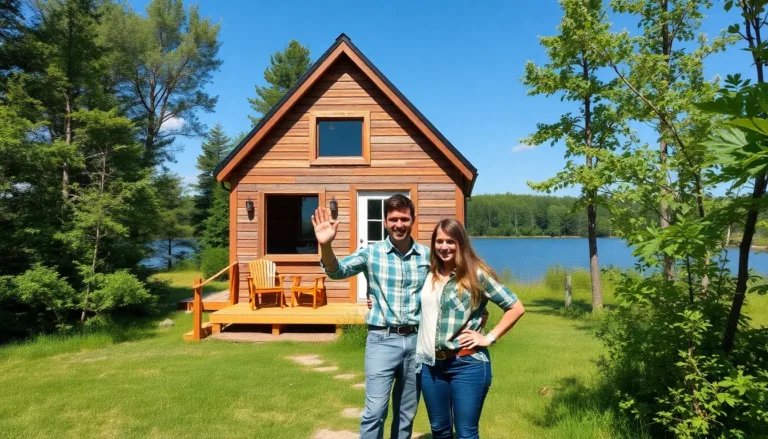Table of Contents
ToggleIn a world where bigger often seems better, compact living is here to flip the script. Imagine a cozy space where every square foot tells a story, and every corner is a clever solution to modern life’s chaos. Compact living isn’t just about downsizing; it’s about maximizing joy and minimizing clutter.
Understanding Compact Living
Compact living focuses on smart design and efficient use of space. This lifestyle promotes simplicity while enhancing quality of life.
Definition of Compact Living
Compact living refers to living in smaller, well-designed spaces that maximize functionality. It encompasses various housing options such as tiny houses, studio apartments, and micro-apartments. This approach encourages minimalism, prioritizing essential belongings while reducing unnecessary clutter. Emphasis lies on thoughtful layouts which facilitate multi-functional use of areas, allowing for comfortable living despite limited square footage.
Benefits of Compact Living
Compact living offers numerous benefits that contribute to a higher quality of life. First, it leads to reduced housing costs, which allows individuals to allocate funds to experiences rather than material possessions. Second, minimal maintenance simplifies upkeep, saving both time and energy. Third, living in compact spaces promotes sustainability, encouraging eco-friendly practices through reduced consumption and waste. Additionally, it fosters closer connections with community, as smaller spaces typically lead to shared amenities and social interaction. Ultimately, compact living enhances well-being by creating an environment that prioritizes functionality and connection.
Key Principles of Compact Living

Compact living emphasizes optimized design and minimalism. This approach prioritizes functionality while creating a comfortable living environment.
Efficient Space Utilization
Space should serve multiple purposes to maximize its potential. Using vertical storage solutions such as shelves and cabinets helps free up floor space. Moving furniture around can create distinct areas for different activities. Daylight plays a key role; keeping spaces bright and open enhances the feeling of spaciousness. Built-in furniture often offers seamless integration into the overall design, minimizing clutter. Layouts that utilize corners and alcoves effectively create a sense of flow in smaller areas. In compact living, prioritizing efficient use of every square foot leads to a more inviting atmosphere.
Multi-Functional Furniture
Selecting furniture that serves more than one purpose optimizes limited space. Sofa beds provide a comfortable seating option that easily transforms into a sleeping area. Storage ottomans can double as seating and spaces for storing essentials, keeping clutter at bay. Folding tables enable flexible dining arrangements while maximizing usable square footage. Desks that convert into dining tables accommodate various activities without sacrificing style. When furniture pieces combine multiple functions, residents enjoy more dynamic and adaptable living spaces. Prioritizing multi-functional options leads to significant gains in both comfort and efficiency in compact environments.
Design Tips for Compact Living
Thoughtful design plays a crucial role in maximizing comfort and functionality in compact living spaces. Specific strategies enhance the overall atmosphere and utilize every inch effectively.
Color Schemes and Lighting
Bright colors create a sense of openness in smaller spaces. Light tones, such as whites, pastels, and soft grays, reflect natural light, making areas feel larger. Incorporating mirrors can amplify this effect, as they reflect light and views, enhancing visual depth. Well-placed lighting fixtures improve both mood and functionality. Floor lamps and sconces can illuminate corners while adding style. Natural light is vital for enhancing spaciousness, so consider sheer curtains for unobstructed views.
Storage Solutions
Clever storage maximizes functionality in compact homes. Vertical shelving units take advantage of wall space and provide ample storage options. Multi-functional furniture, like coffee tables with hidden compartments, offers additional storage without sacrificing style. Utilizing under-bed space with storage bins effectively keeps belongings organized and out of sight. Hooks and pegboards on walls maximize accessibility while adding visual interest. Sliding doors and furniture on wheels facilitate seamless transitions and increase flexibility in arrangements.
Challenges of Compact Living
Compact living presents unique challenges that require innovative solutions. Limited space often creates obstacles for residents seeking functionality.
Limited Space
Living in compact environments means every square foot matters. Space constraints can lead to difficulties in storing belongings. Room for movement can feel restricted, making organization essential. Without ample storage options, clutter accumulates quickly. Maintaining a balance between simplicity and practicality becomes critical. Solutions like vertical storage or foldable furniture help maximize available areas. Utilizing under-bed storage allows residents to keep items out of sight while still accessible. Adequate planning plays a vital role in achieving efficiency in small spaces.
Personalization
Personalizing a compact living space poses its own challenges. Limited square footage can hinder creative expressions. Residents often struggle to incorporate personal touches while maintaining functionality. Focusing on essential belongings can help streamline the decor process. Choose vibrant art pieces or unique plants that draw attention without overwhelming the space. Multifunctional furniture provides versatility, allowing for style without sacrificing practicality. Thoughtful designs can make even the smallest areas feel more inviting. Embracing a minimalistic approach encourages more meaningful connections to the items that remain.
Embracing compact living offers a path to a simpler and more fulfilling lifestyle. By focusing on smart design and efficient use of space, individuals can transform smaller areas into functional and inviting homes. This approach not only promotes minimalism but also fosters a sense of community and connection.
With thoughtful layouts and multi-functional furniture, residents can maximize comfort while minimizing clutter. The benefits extend beyond aesthetics, leading to reduced costs and a sustainable way of life. Ultimately, compact living encourages a mindful approach to belongings and space, enhancing overall well-being and satisfaction.







